MSI Katana GF76 review – is RTX 3050 Ti the new sweet spot?
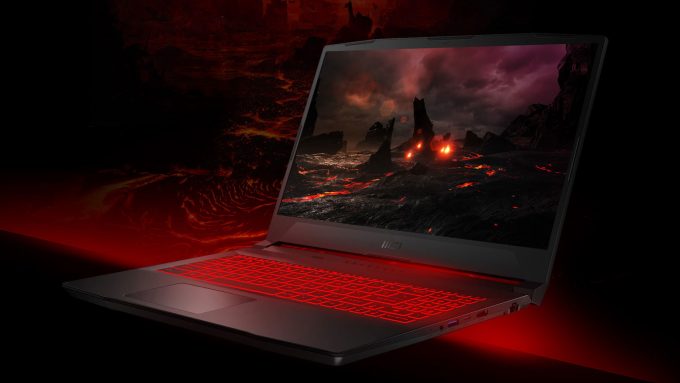 MSI has updated its gaming weaponry with devices that stay true to Intel. As one of the most Intel-centric brands out there, the Red Dragon plans to reintroduce the trust to the Blue giant to its customers. The laptop we are going to show you today is called the Katana GF76. It happens to be the most budget-conscious 17-inch laptop in MSI’s gaming laptop portfolio.
MSI has updated its gaming weaponry with devices that stay true to Intel. As one of the most Intel-centric brands out there, the Red Dragon plans to reintroduce the trust to the Blue giant to its customers. The laptop we are going to show you today is called the Katana GF76. It happens to be the most budget-conscious 17-inch laptop in MSI’s gaming laptop portfolio.
They have switched the 10th Gen Comet Lake-H CPUs for the 11th Gen Tiger Lake H45 ones. As we figured in our most recent tests, they are Intel’s biggest chance of a comeback in the laptop world – the only space they seem to have a chance. Nevertheless, you have to keep in mind that the budget nature of the notebook means you will have to make sacrifices. For example, there is no Thunderbolt connector, and the graphics options have rather low TGP limits. Precisely – 85W for the RTX 3060, and 60W for the RTX 3050, and RTX 3050 Ti.
On the other hand, 17-inch gaming laptops are still very useful in our opinion. Because of the large screen, users rarely go for external monitors. Respectively, we are going to see if this device’s display is good enough, or MSI cheaped out on this component.
You can check the prices and configurations in our Specs System: https://laptopmedia.com/series/msi-katana-gf76/
Contents
Specs Sheet
- HDD/SSD
- hasta 8000GB SSD
- Ranura M.2
- 1x M.2 NVMe slot
- RAM
- up to 64GB
- OS
- Windows 10 Home, Windows 11 Home, Windows 11 Pro, Windows 10 Pro
- Batería
- 53Wh, 3-cell
- Material del cuerpo
- Plastic / Polycarbonate
- Dimensiones
- 398 x 273 x 25.2 mm (15.67" x 10.75" x 0.99")
- Peso
- 2.60 kg (5.7 lbs)
- Puertos y conectividad
- 1x USB Type-A
- 2.0
- 2x USB Type-A
- 3.2 Gen 1 (5 Gbps)
- 1x USB Type-C
- 3.2 Gen 1 (5 Gbps)
- HDMI
- Ethernet LAN
- 10, 100, 1000 Mbit/s
- Wi-Fi
- 802.11ax
- Bluetooth
- 5.1
- Conector de audio
- 3.5mm Combo Jack
- Features
- Lector de huellas dactilares
- Cámara web
- HD
- Teclado retroiluminado
- Altavoces
- Stereo Speakers by Nahimic Audio
- Unidad óptica
Todo MSI Katana GF76 (11Ux) configuraciones
What’s in the box?
Inside the package, you will see only a 150W power brick and some paper manuals.
Design and construction
Apparently, the GF series has now grown both in weight and in size. Now we see that the Katana GF76 is in the ballpark of other 17-inch gaming laptops. The exact measurements are 2.60 kg, and 25.2mm, and we are generally happy with the overall build quality. The base is strong, while the lid is a bit flexy. Ultimately, the laptop is made out of plastic.
Its lid can be opened with a single hand, and the bezels around the matte display seem rather thin. Thankfully, MSI has fitted the machine with an HD Webcam.
Unfortunately, this device has the same downsides as its 15-inch brother, regarding the keyboard. Its key travel is average, and the feedback is a bit mushy, which definitely takes out of the experience during gaming. On the bright side, you get a NumberPad segment, and a backlight (although only glowing in the typical Red color).
Fortunately, there is very little deck flex, and the touchpad works well if we don’t count the slight gap in the clicking mechanism. Unsurprisingly, all of the features around this laptop’s construction indicate cost-cutting measures.
If you turn the laptop upside down, you will notice that the ventilation grill is pretty big. Interestingly, the fans are not fed with air directly. This, in our opinion, is done to ensure that you won’t cover the fan cutouts when the device is placed on your lap. As for the hot air, it escapes the machine through three outlets – two on the back, and one on the left side. In addition to the vents, you will also see the speaker cutouts on the bottom panel.
Ports
On the left side of the machine, you will find the power plug, a USB Type-A 3.2 (Gen. 1) port, and a USB Type-A 2.0 port. Switch to the right to see an RJ-45 connector, an HDMI connector, a USB Type-C 3.2 (Gen. 1) port, followed by a USB Type-A 3.2 (Gen. 1) port, and an audio jack.
Display quality
MSI Katana GF76 is equipped with a Full HD 144Hz IPS panel, model number AUO B173HAN04.9. Its diagonal is 17.3″ (43.94 cm), and the resolution 1920 х 1080 pixels. The screen ratio is 16:9, and we are looking at a pixel density of – 127 ppi, and a pitch of 0.2 х 0.2 mm. The screen turns into Retina when viewed at distance equal to or greater than 69cm (27″) (from this distance one’s eye stops differentiating the separate pixels, and it is normal for looking at a laptop).
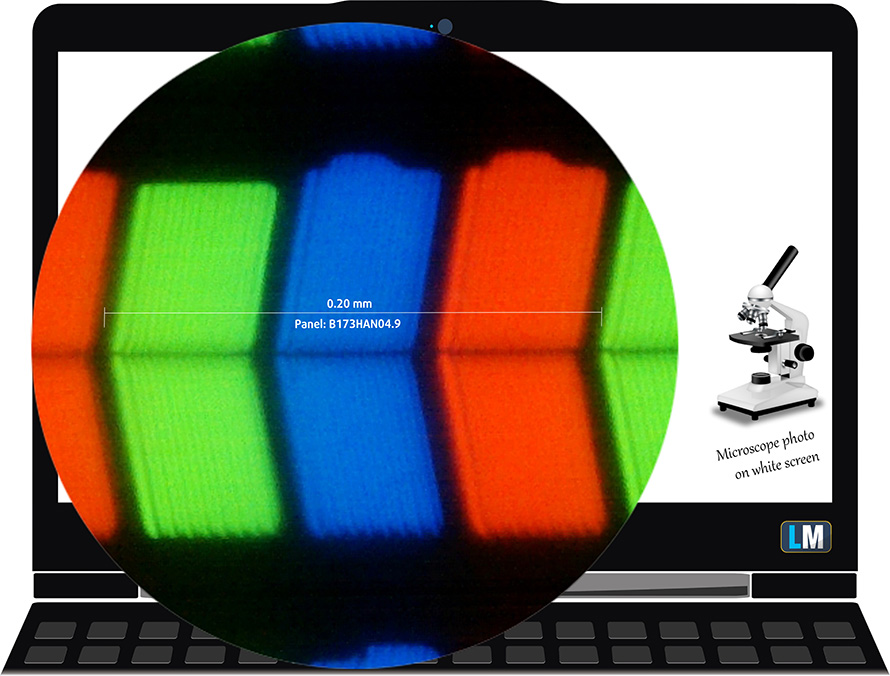
Viewing angles are comfortable. We offer images at 45° to evaluate image quality.

The measured maximum brightness of 277 nits in the middle of the screen and also 277 nits as an average for the whole area, with a maximum deviation of only 3%. The Correlated Color Temperature on a white screen is 6300K – slightly warmer than the optimal for the sRGB standard of 6500K.
In the illustration below you can see how the display performs from a uniformity perspective. In other words, the leakage of light from the light source.
Values of dE2000 over 4.0 should not occur, and this parameter is one of the first you should check if you intend to use the laptop for color-sensitive work. The contrast ratio is good – 1340:1.
To make sure we are on the same page, we would like to give you a little introduction to the sRGB color gamut and the Adobe RGB. To start, there’s the CIE 1976 Uniform Chromaticity Diagram that represents the visible specter of colors by the human eye, giving you a better perception of the color gamut coverage and the color accuracy.
Inside the black triangle, you will see the standard color gamut (sRGB) that is being used by millions of people on HDTV and on the web. As for the Adobe RGB, this is used in professional cameras, monitors, etc for printing. Colors inside the black triangle are used by everyone and this is the essential part of the color quality and color accuracy of a mainstream notebook.
Still, we’ve included other color spaces like the famous DCI-P3 standard used by movie studios, as well as the digital UHD Rec.2020 standard. Rec.2020, however, is still a thing of the future and it’s difficult for today’s displays to cover that well. We’ve also included the so-called Michael Pointer gamut, or Pointer’s gamut, which represents the colors that naturally occur around us every day.
The yellow dotted line shows MSI Katana GF76’s color gamut coverage.
Its display covers only 51% of the sRGB/ITU-R BT.709 (web/HDTV standard) in CIE1976.
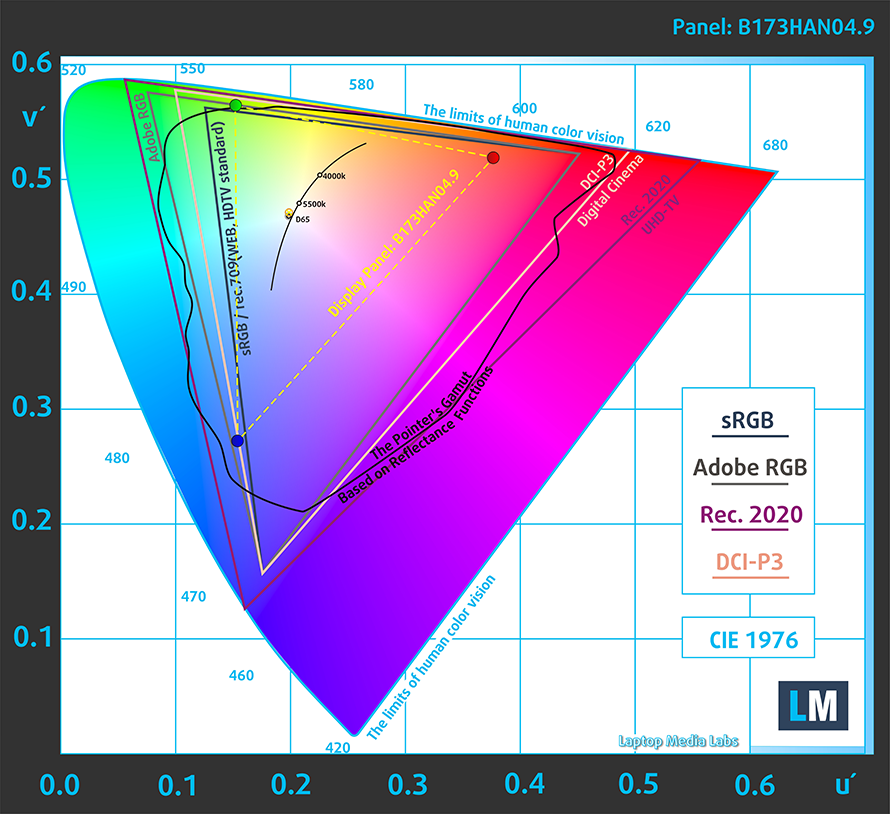
Our “Design and Gaming” profile delivers optimal color temperature (6500K) at 140 cd/m2 luminance and sRGB gamma mode.
We tested the accuracy of the display with 24 commonly used colors like light and dark human skin, blue sky, green grass, orange, etc. You can check out the results at factory condition and also, with the “Design and Gaming” profile.
Below you see the scores of MSI Katana GF76 with the “Gaming and Web design” profile.
The next figure shows how well the display is able to reproduce really dark parts of an image, which is essential when watching movies or playing games in low ambient light.
The left side of the image represents the display with stock settings, while the right one is with the “Gaming and Web Design” profile activated. On the horizontal axis, you will find the grayscale, and on the vertical axis – the luminance of the display. On the two graphs below you can easily check for yourself how your display handles the darkest nuances but keep in mind that this also depends on the settings of your current display, the calibration, the viewing angle, and the surrounding light conditions.
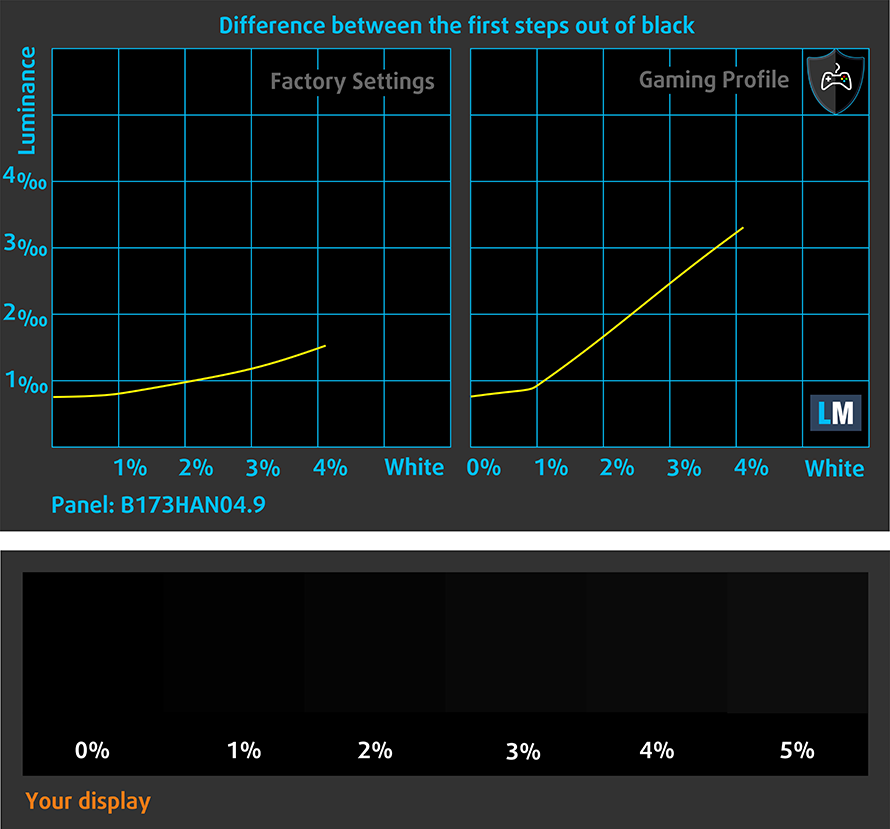
Response time (Gaming capabilities)
We test the reaction time of the pixels with the usual “black-to-white” and “white-to-black” method from 10% to 90% and vice versa.
We recorded Fall Time + Rise Time = 22 ms.
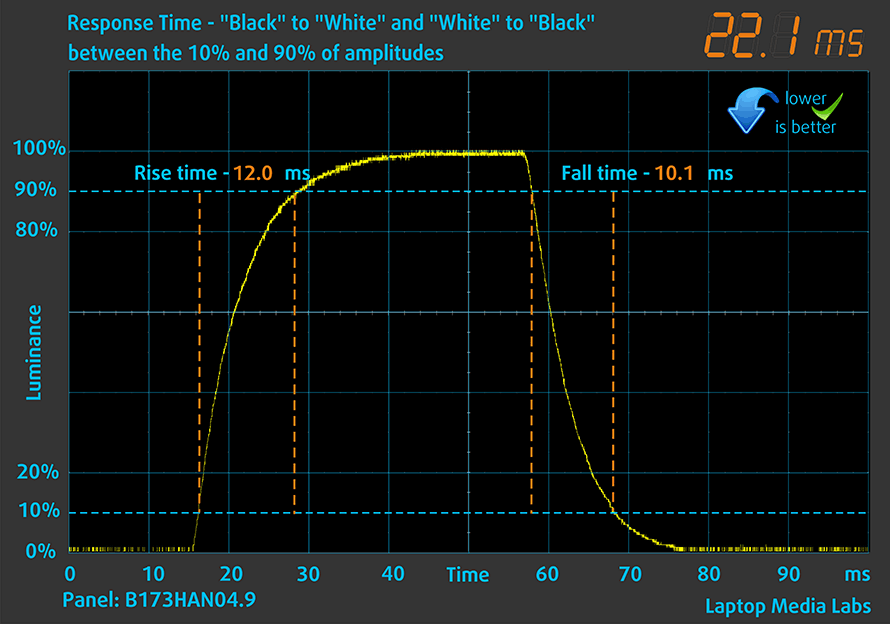
After that, we test the reaction time of the pixels with the usual “Gray-to-Gray” method from 50% White to 80% White and vice versa between 10% and 90% of the amplitude.

PWM (Screen flickering)
Pulse-width modulation (PWM) is an easy way to control monitor brightness. When you lower the brightness, the light intensity of the backlight is not lowered, but instead turned off and on by the electronics with a frequency indistinguishable to the human eye. In these light impulses, the light/no-light time ratio varies, while brightness remains unchanged, which is harmful to your eyes. You can read more about that in our dedicated article on PWM.
The backlight of the MSI Katana GF76 doesn’t use PWM to adjust its levels of brightness. This means the display is comfortable for use, without presenting any excessive eye strain in this aspect.
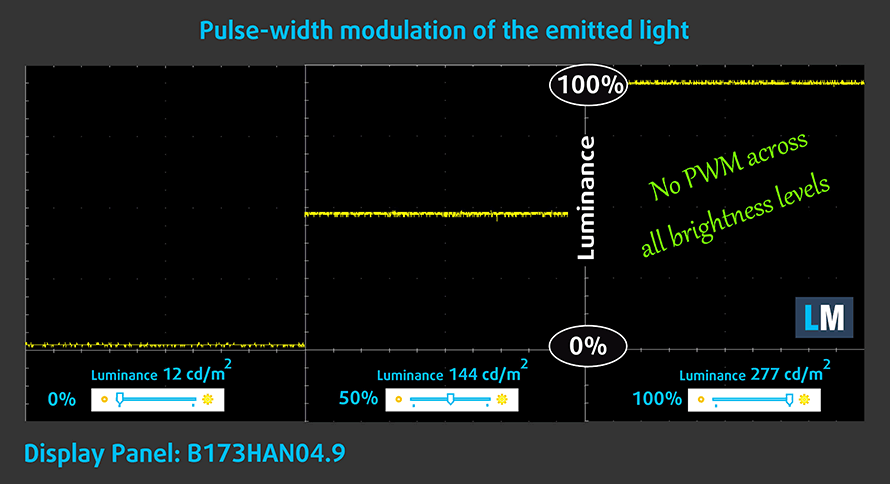
Blue light emissions
Installing our Health-Guard profile not only eliminates PWM but also reduces the harmful Blue Light emissions while keeping the colors of the screen perceptually accurate. If you’re not familiar with the Blue light, the TL;DR version is – emissions that negatively affect your eyes, skin, and your whole body. You can find more information about that in our dedicated article on Blue Light.
Buy our profiles
Since our profiles are tailored for each individual display model, this article and its respective profile package are meant for MSI Katana GF76 configurations with 17.3″ FHD IPS AUO B173HAN04.9.
*Should you have problems with downloading the purchased file, try using a different browser to open the link you’ll receive via e-mail. If the download target is a .php file instead of an archive, change the file extension to .zip or contact us at [email protected].
Read more about the profiles HERE.
Además de recibir perfiles eficientes y respetuosos con la salud, al comprar los productos de LaptopMedia también apoyas el desarrollo de nuestros laboratorios, donde probamos los dispositivos para elaborar las reseñas más objetivas posibles.

Trabajo de oficina
El perfil Trabajo de Oficina debería ser utilizado sobre todo por usuarios que pasan la mayor parte del tiempo mirando trozos de texto, tablas o simplemente navegando. Este perfil pretende ofrecer una mayor nitidez y claridad manteniendo una curva de gamma plana (2,20), una temperatura de color nativa y colores perceptualmente precisos.

Diseño y juego
Este perfil está dirigido a los diseñadores que trabajan con los colores de forma profesional, y también para juegos y películas. Design and Gaming lleva a los paneles de visualización a sus límites, haciéndolos tan precisos como sea posible en el estándar sRGB IEC61966-2-1 para Web y HDTV, en el punto blanco D65.

Salud-Guardia
Salud-Guardia elimina la perjudicial Modulación de Ancho de Pulso (PWM) y reduce la luz azul negativa que afecta a nuestros ojos y a nuestro cuerpo. Al estar adaptado a cada panel, consigue mantener los colores perceptivamente precisos. Salud-Guardia simula el papel, por lo que la presión sobre los ojos se reduce considerablemente.
Consigue los 3 perfiles con un 33% de descuento
Drivers
All of the drivers and utilities for this notebook can be downloaded from here: https://www.msi.com/Laptop/support/Katana-GF76-11UX
Battery
Now, we conduct the battery tests with Windows Better performance setting turned on, screen brightness adjusted to 120 nits and all other programs turned off except for the one we are testing the notebook with. This notebook’s 53Wh battery pack lasts for 5 hours and 35 minutes of Web browsing, and 4 hours and 26 minutes of video playback.
Para simular las condiciones de la vida real, utilizamos nuestro propio script de navegación automática por más de 70 sitios web.

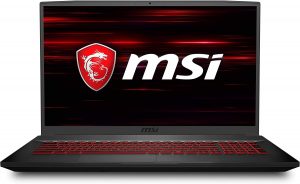
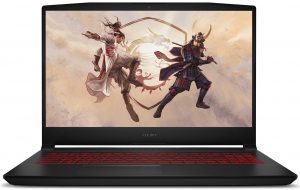

Para cada prueba de este tipo, utilizamos el mismo vídeo en HD.




CPU options
Currently, the laptop is sold only with a Core i7-11800H. However, you should shortly be able to find it with a Core i5-11400H.
Los resultados proceden de la prueba de CPU Cinebench 20 (cuanto mayor sea la puntuación, mejor)
Los resultados proceden de nuestra prueba de referencia de Photoshop (cuanto más baja sea la puntuación, mejor)
GPU options
In terms of graphics, there are three options – RTX 3050 (60W), RTX 3050 Ti (60W), and RTX 3060 (85W).
Los resultados proceden de la prueba 3DMark: Time Spy (Graphics) (cuanto mayor sea la puntuación, mejor)
Los resultados proceden de la prueba 3DMark: Fire Strike (Graphics) (cuanto mayor sea la puntuación, mejor)
Los resultados proceden de la prueba comparativa Unigine Superposition (cuanto mayor sea la puntuación, mejor)
Gaming tests

| Far Cry 5 | Full HD, Normal (Check settings) | Full HD, High (Check settings) | Full HD, Ultra (Check settings) |
|---|---|---|---|
| Average fps | 100 fps | 91 fps | 85 fps |

| Rise of the Tomb Raider (2016) | Full HD, Lowest (Check settings) | Full HD, Medium (Check settings) | Full HD, Very High (Check settings) | Full HD, MAX (Check settings) |
|---|---|---|---|---|
| Average fps | 163 fps | 116 fps | 57 fps | 37 fps |

| Shadow of the Tomb Raider (2018) | Full HD, Lowest (Check settings) | Full HD, Medium (Check settings) | Full HD, High (Check settings) |
|---|---|---|---|
| Average fps | 140 fps | 84 fps | 71 fps |

| Tom Clancy’s Ghost Recon Wildlands | Full HD, Medium (Check settings) | Full HD, High (Check settings) | Full HD, Very High (Check settings) | Full HD, Ultra (Check settings) |
|---|---|---|---|---|
| Average fps | 85 fps | 77 fps | 66 fps | 40 fps |
Temperatures and comfort
Max CPU load
In this test we use 100% on the CPU cores, monitoring their frequencies and chip temperature. The first column shows a computer’s reaction to a short load (2-10 seconds), the second column simulates a serious task (between 15 and 30 seconds), and the third column is a good indicator of how good the laptop is for long loads such as video rendering.
Average core frequency (base frequency + X); CPU temp.
| Intel Core i7-11800H (45W TDP) | 0:02 – 0:10 sec | 0:15 – 0:30 sec | 10:00 – 15:00 min |
|---|---|---|---|
| MSI Katana GF76 | 2.95 GHz (B+28%) @ 95°C @ 55W | 2.82 GHz (B+23%) @ 95°C @ 51W | 2.82 GHz (B+23%) @ 94°C @ 52W |
| MSI Pulse GL76 | 3.16 GHz (B+37%) @ 95°C @ 65W | 3.00 GHz (B+30%) @ 95°C @ 59W | 2.87 GHz (B+25%) @ 95°C @ 55W |
| MSI Pulse GL66 | 2.94 GHz (B+28%) @ 94°C @ 58W | 2.76 GHz (B+20%) @ 94°C @ 52W | 2.77 GHz (B+20%) @ 94°C @ 52W |
Well, the 17-inch Katana is somewhere in the ballpark of the 15-inch Pulse. Yet again, the temperatures are way too high in our opinion.
Real-life gaming
| NVIDIA GeForce RTX 3050 Ti | GPU frequency/ Core temp (after 2 min) | GPU frequency/ Core temp (after 30 min) | GPU frequency/ Core temp (Max Fan) |
|---|---|---|---|
| MSI Katana GF76 | 1619 MHz @ 76°C @ 60W | 1594 MHz @ 82°C @ 60W | 1632 MHz @ 70°C @ 60W |
Well, the situation is unchanged in the graphics department, as well. Actually, you can improve the thermal picture by pushing the Turbo shortcut. This boosts the fan speed to the maximum, and the laptop starts to appear as a vacuum cleaner.
Gaming comfort
Unfortunately, there is no treat to the heat on the keyboard. We measured the scorching 56°C in the middle of the keyboard, and as you can imagine, it’s not the most comfortable experience possible.
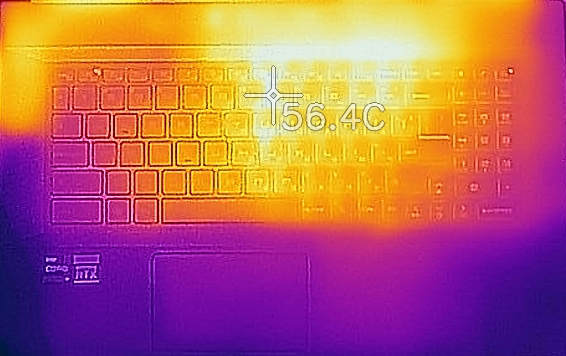
Verdict
 Before we conclude this review, we would like to remind you that this is one of the most affordable 17-inch gaming notebooks out there. Namely, one that has both Intel’s and NVIDIA’s latest technology inside. Having a low price is a double-edged sword, though. Yes, it can reach a broader audience, but at what cost? Well, the body is made mainly out of plastic (although the build quality is more than decent). The keyboard features only a Red backlight, and can’t be described as something groundbreaking.
Before we conclude this review, we would like to remind you that this is one of the most affordable 17-inch gaming notebooks out there. Namely, one that has both Intel’s and NVIDIA’s latest technology inside. Having a low price is a double-edged sword, though. Yes, it can reach a broader audience, but at what cost? Well, the body is made mainly out of plastic (although the build quality is more than decent). The keyboard features only a Red backlight, and can’t be described as something groundbreaking.
Also, the battery life is just not great. It lasted for 5 hours and a half of Web browsing, and roughly one hour less during video playback. However, this is pretty much an issue with both the Katana, the Pulse, and the Leopard series from MSI’s latest devices.
MSI Katana GF76’s 17.3-inch Full HD IPS panel has a good contrast ratio and comfortable viewing angles. Its backlight doesn’t flicker at any brightness level, and it has a 144Hz refresh rate. On the other hand, the pixel response times are not as fast as the refresh rate suggests, and it covers only 51% of the sRGB colors.
All of the aforementioned means that the laptop is not the most appetizing one on the market. However, the 60W GeForce RTX 3050 Ti seems to be the new sweet spot for budget gaming. It is significantly faster than the GTX 1650 Ti and is nearing the performance you get from a GTX 1660 Ti. On top of that, you get ray-tracing on a budget, which is great.
Unfortunately, you don’t get any Thunderbolt connectivity, and the laptop doesn’t come with an SD card slot. In addition to that, one of the three USB Type-A ports works at 2.0 speeds. Also, the cooling solution was a bit of a letdown. This prevents you from fully capitalizing on the OC features the MSI Center provides.
To be honest, the cooling has never been great on a GF series device, but we hoped that the heavier and bulkier chassis this year is going to be a positive factor. Well, it’s not.
You can check the prices and configurations in our Specs System: https://laptopmedia.com/series/msi-katana-gf76/
Pros
- Competitively priced
- Two SODIMM slots, and up to two M.2 PCIe x4 slot
- Rigid structure
- Lacks PWM (AUO B173HAN04.9)
- 144Hz refresh rate (AUO B173HAN04.9)
Cons
- 51% sRGB coverage (AUO B173HAN04.9)
- Slow pixel response times and low maximum brightness (AUO B173HAN04.9)
- No SD card reader and Thunderbolt 4
- Runs hot
- Unimpressive battery life
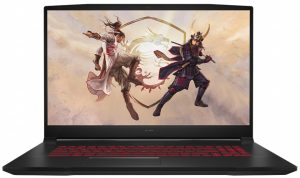
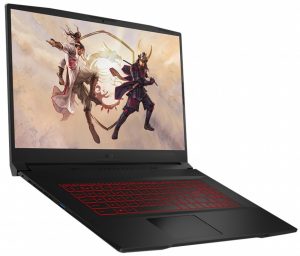
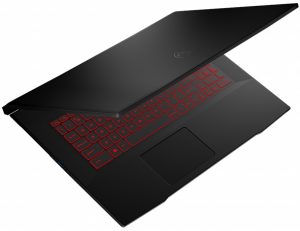

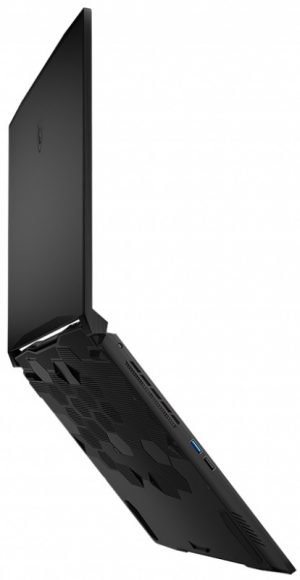
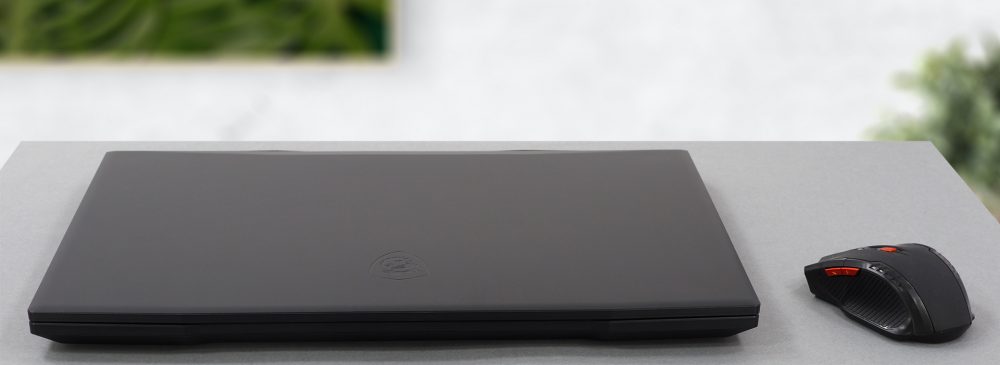
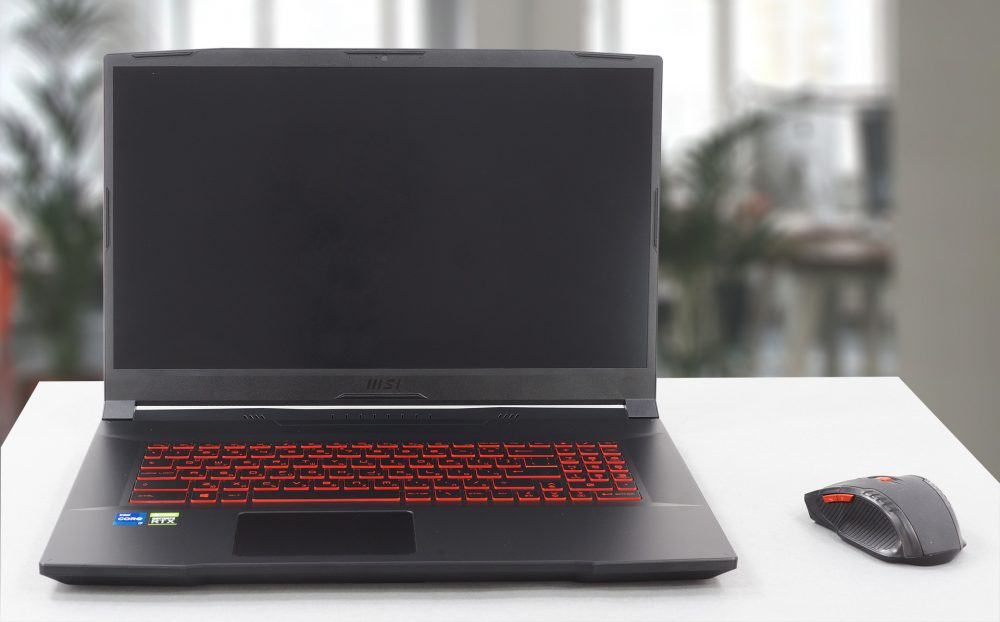
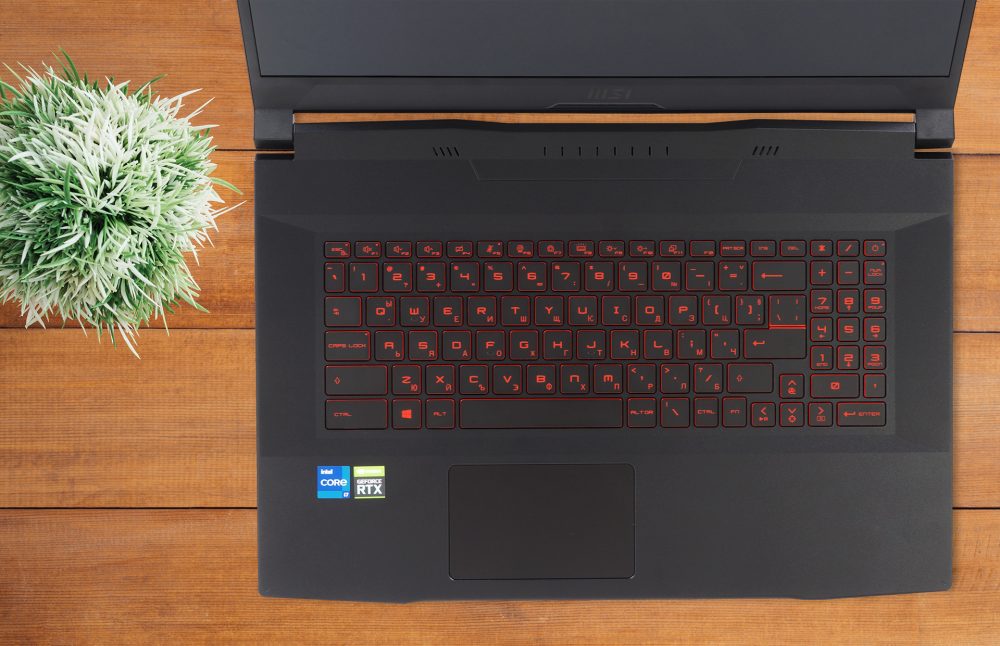
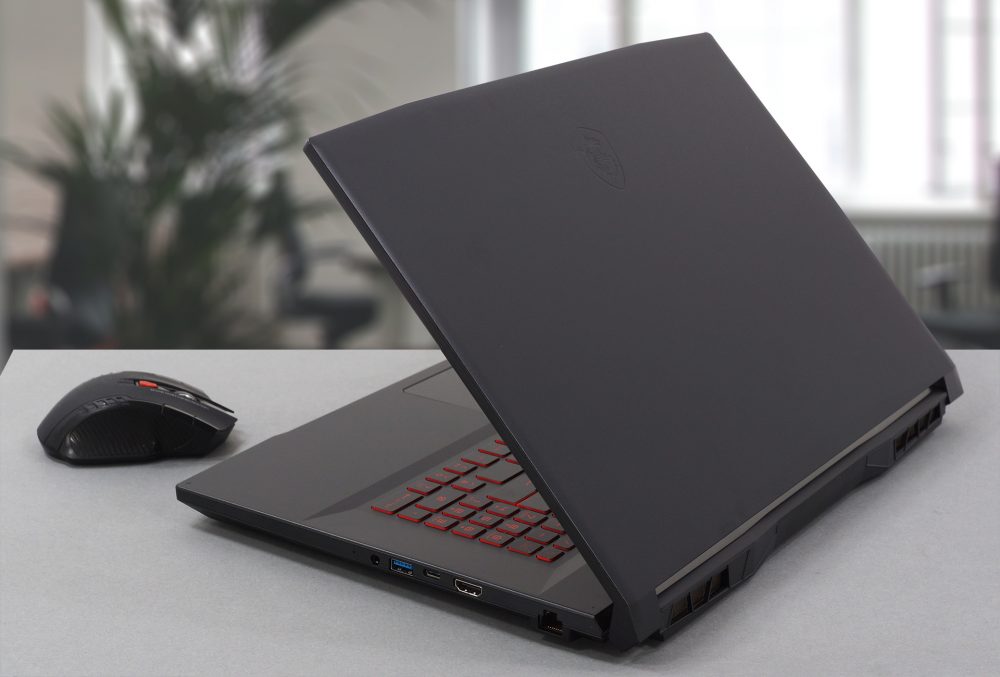
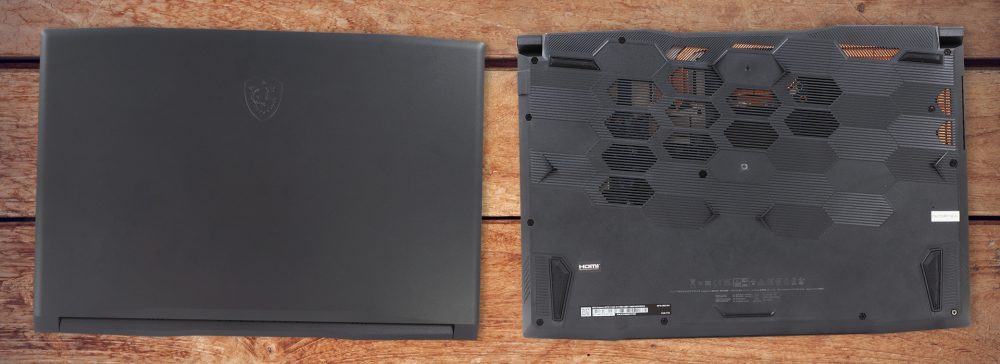


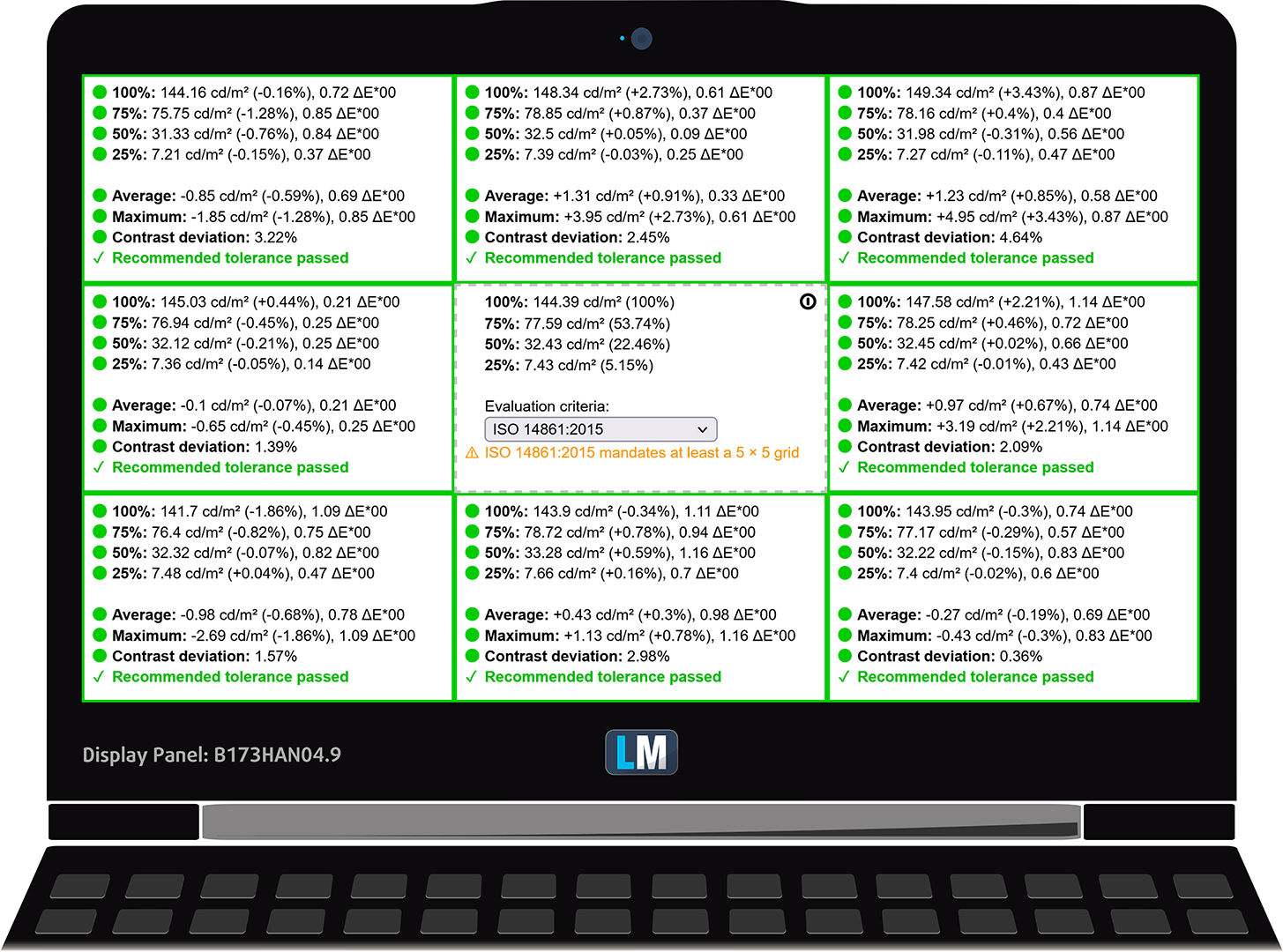
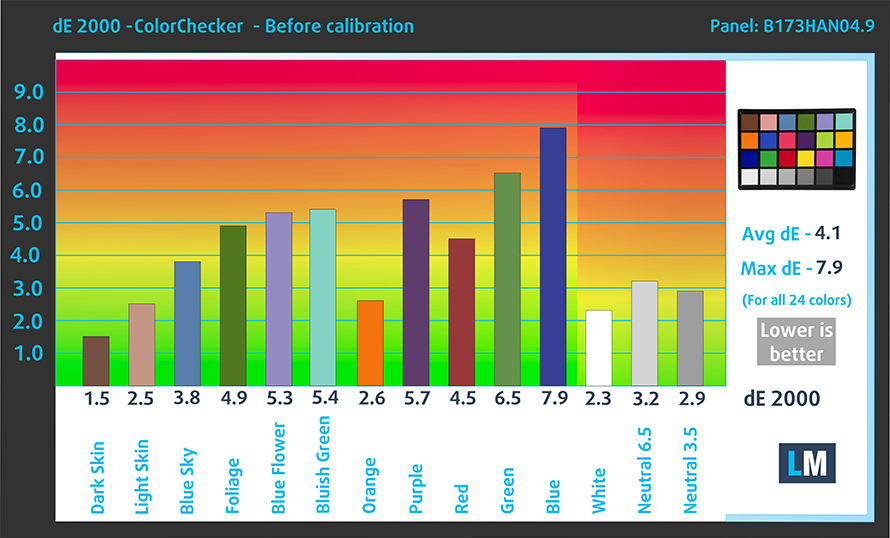
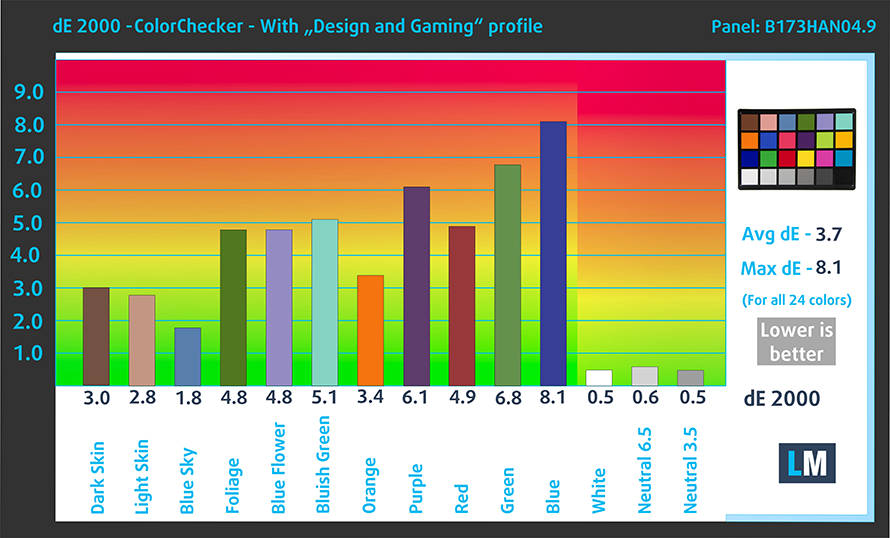

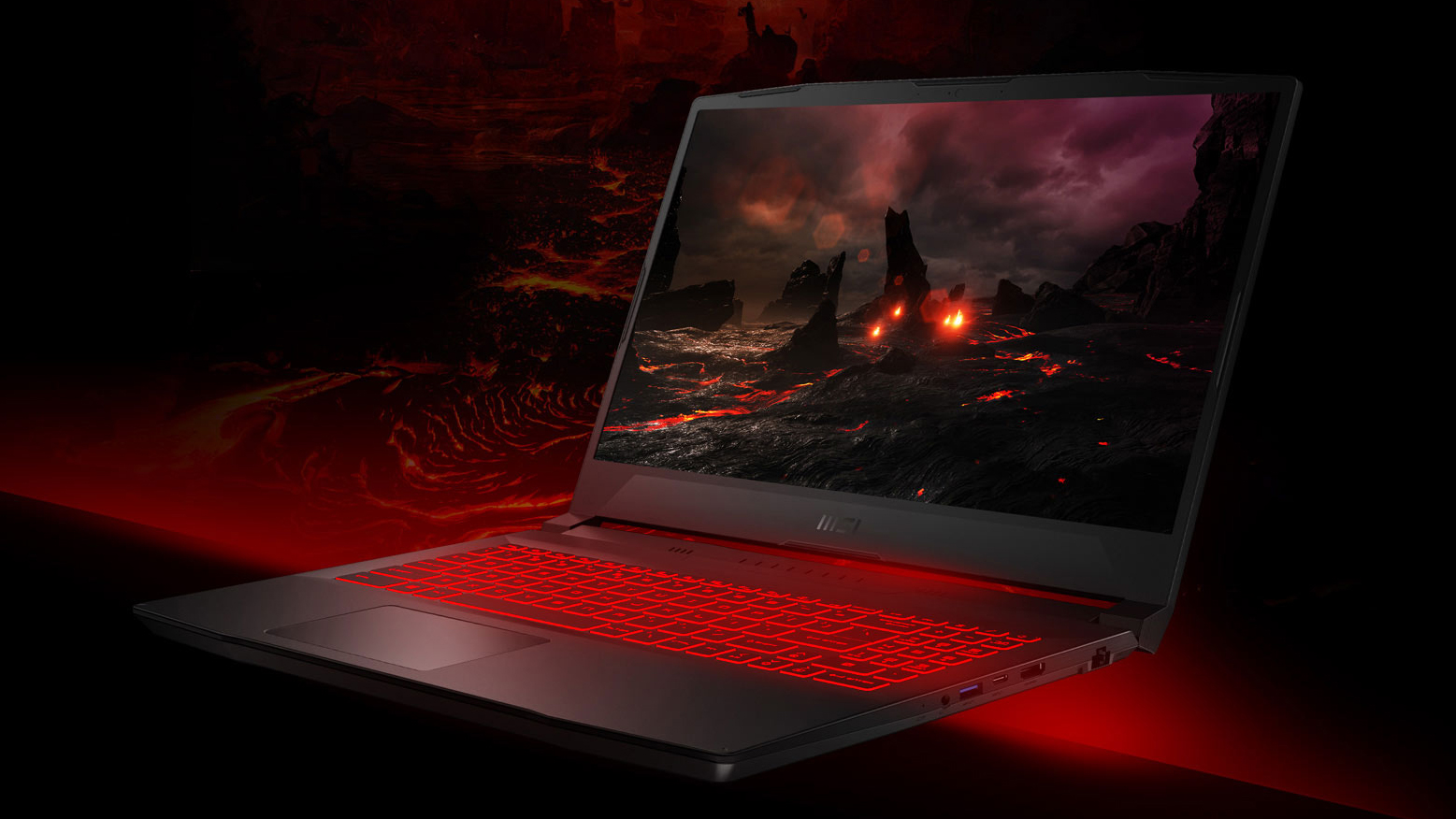








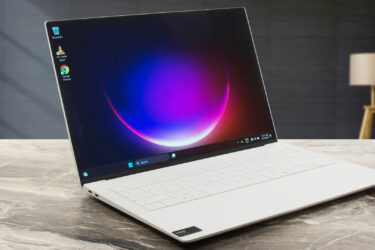
Good laptop!